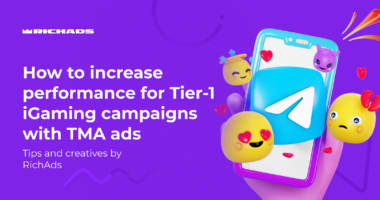We’ve covered the topic of 3rd party cookies many times on our blog.
This is a catastrophe that just keeps not happening. And honestly, is not even a catastrophe at all.
But let’s not get ahead of ourselves.
Google’s indecisiveness causes real problems for the advertising industry. It introduces uncertainty. Big companies plan way ahead and need to include any technological changes that could arise from the demise of 3rd party cookies in their strategies. And need to do it repeatedly, as the deadline keeps getting pushed.
The reasons why Google decided to skip its fourth deadline are also problematic and cause further problems for advertisers.
Let’s dive into what the situation looks like and what the consequences are for the average Joe Advertiser.
What the whole fuss is about
3rd party cookies are small text files left by your web browser that point to outside domains. This is what distinguishes them from 1st party cookies, which point to the same domain that the person is visiting.
Cookies hold important information that make browsing the web easier and more personalized experience. They hold information such as preferred language, contents of a shopping cart and even session IDs that allow people to be logged into various services.
3rd party cookies are also connected with tracking and analytical services that collect valuable information about visitors. They are also widely seen by the industry as having a potential to infringe user privacy or be a security threat, since the information about the visit and users are send outside the responsibility of the owner of the visited domain.
3rd party cookies were (and still are) an imperfect solution to a real problem – the need of publishers to understand what is going on with their pages.
Google, as the maker of world’s most popular web browser – Chrome – decided that it is up to it to do something about it. But, since 3rd party cookies support most advertising businesses and Google’s income relies largely on those, it wasn’t a matter of simply pulling the plug. It was, and still is, a matter of finding a good replacement.
Privacy sandbox
Throughout the years, Google has proposed several solutions to eat the cake (get rid of cookies) and have it (allow advertisers to track data for analytical purposes) at the same time. These solutions, gathered under the umbrella of ‘Privacy sandbox’, all had one thing in common: the emphasis of data collection was put not on individual users but on similarities of interests.
On paper, this sounds great. Instead of tracking an individual (even if anonymous) user, the visitor was to be assigned to a group based on similarities of interest, and then the whole group would be tracked.
Ideal solution.
Fully controlled by Google.
The grip that would Google hold over the advertisers would be immense. They would not only control the world’s largest advertising network (Google Ads) but also the whole measurement system that makes advertising profitable.
That doesn’t sit well with advertisers, and well, regulators.

Hence the pushbacks.
Setting up a new standard
User privacy is on everyone’s lips, and rightly so. The amount of information Google and other parties have on its users is astronomical. Any attempt at curbing the rate advertisers learn about individual users should be cheered.
But it is hard to trust Google to basically regulate itself and the whole industry. This makes advertisers nervous. The uncertainty of the industry due to unclear roadmap (as of now, phasing out of 3rd party cookies is set to begin at the beginning of 2025) causes the aforementioned problems.
This is where other tracking solutions such as Voluum come into play.
Voluum is an ad tracker that aggregates large amounts of data for advertisers to analyze. It does not follow individual users; it only records statistical data about the whole traffic.
What’s important, Voluum has also a solution for the post-cookie era.
Voluum solution
It is hard to believe that Voluum was ready for end of 3rd party cookies back in 2022.
The Voluum team always act proactively, constantly monitoring any challenges that could impact advertisers. In 2022, we didn’t know that Google would not follow on its original promise. So we planned ahead (way ahead, as it turned out) and came out with the solution that was genius in its simplicity.
If 3rd party cookies are to be deprecated, you can set up your tracking in a way that will rely on 1st party cookies.
Cookies that are not planned to be banned anytime soon.
Like I said, genius.
How does it work?
Imagine that you have a landing page in your funnel that uses a lander.com domain, you can create a subdomain of this domain, called for example track.lander.com and use this subdomain as your custom domain for tracking.
Voluum tracking scripts set both 1st and 3rd party cookies to store information about the visit (namely click ID) and if the latter are not available due to Google finally following up on its promise or other cookie blocking solutions, Voluum will use the former.
With Voluum, you will always:
- Have complete data
- Conversions correctly attributed to original visits
- Unbroken campaign flow
- Speed that comes from the state-of-the-art CloudFront architecture
And, above all
- Peace of mind knowing that you can advertise safely.
Try Voluum for yourself
Voluum is suitable for various business cases. We know there are many ways to make money online. All of them need stable and dependable tracker.
You can try Voluum for yourself or get it straight away.





